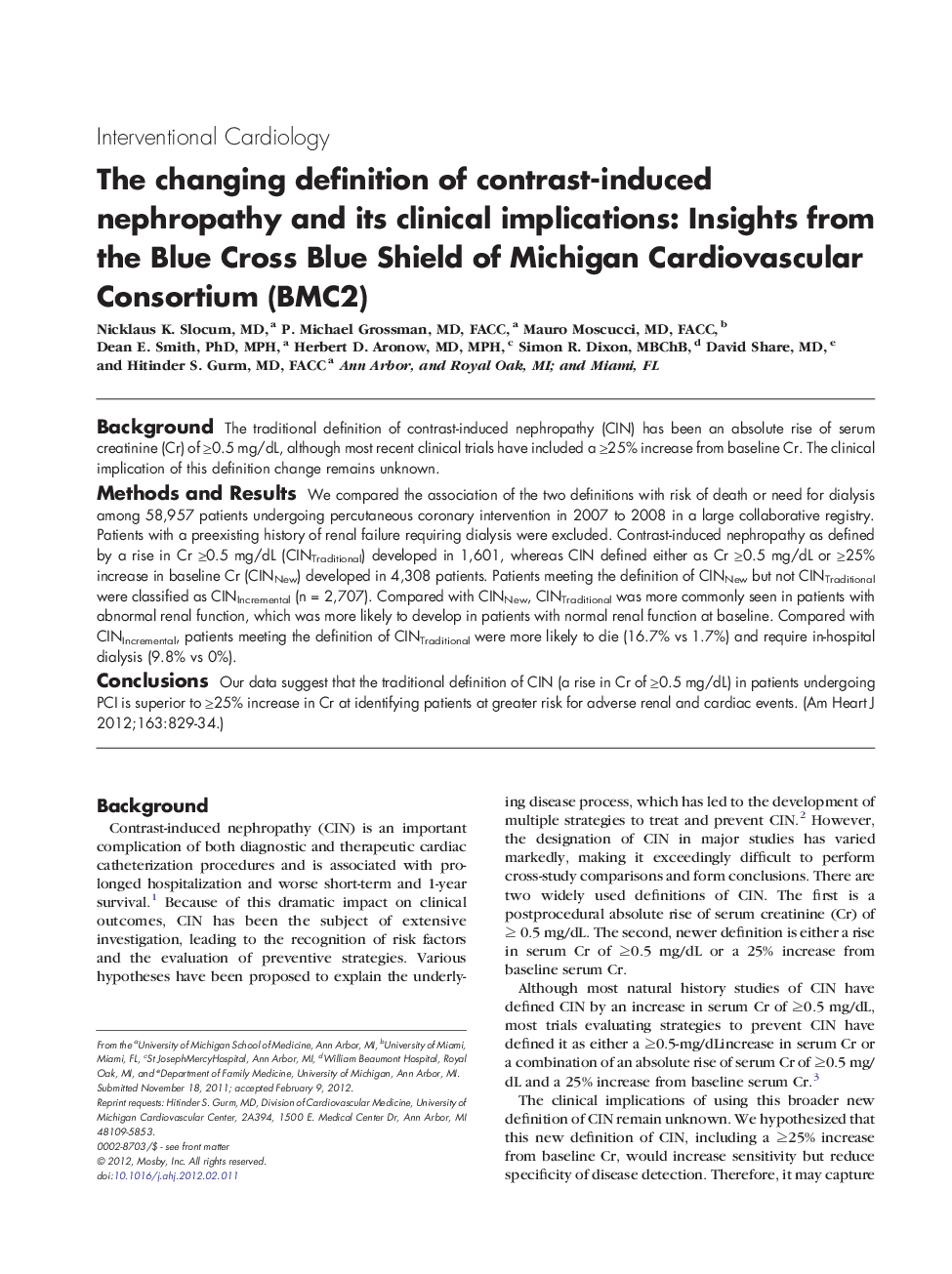| کد مقاله | کد نشریه | سال انتشار | مقاله انگلیسی | نسخه تمام متن |
|---|---|---|---|---|
| 5927043 | 1167663 | 2012 | 6 صفحه PDF | دانلود رایگان |

BackgroundThe traditional definition of contrast-induced nephropathy (CIN) has been an absolute rise of serum creatinine (Cr) of â¥0.5 mg/dL, although most recent clinical trials have included a â¥25% increase from baseline Cr. The clinical implication of this definition change remains unknown.Methods and ResultsWe compared the association of the two definitions with risk of death or need for dialysis among 58,957 patients undergoing percutaneous coronary intervention in 2007 to 2008 in a large collaborative registry. Patients with a preexisting history of renal failure requiring dialysis were excluded. Contrast-induced nephropathy as defined by a rise in Cr â¥0.5 mg/dL (CINTraditional) developed in 1,601, whereas CIN defined either as Cr â¥0.5 mg/dL or â¥25% increase in baseline Cr (CINNew) developed in 4,308 patients. Patients meeting the definition of CINNew but not CINTraditional were classified as CINIncremental (n = 2,707). Compared with CINNew, CINTraditional was more commonly seen in patients with abnormal renal function, which was more likely to develop in patients with normal renal function at baseline. Compared with CINIncremental, patients meeting the definition of CINTraditional were more likely to die (16.7% vs 1.7%) and require in-hospital dialysis (9.8% vs 0%).ConclusionsOur data suggest that the traditional definition of CIN (a rise in Cr of â¥0.5 mg/dL) in patients undergoing PCI is superior to â¥25% increase in Cr at identifying patients at greater risk for adverse renal and cardiac events.
Journal: American Heart Journal - Volume 163, Issue 5, May 2012, Pages 829-834